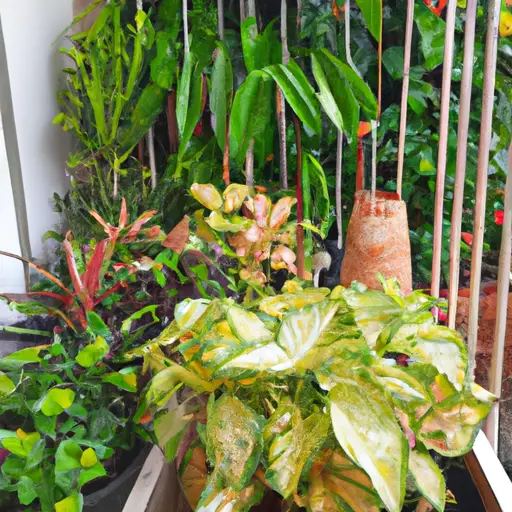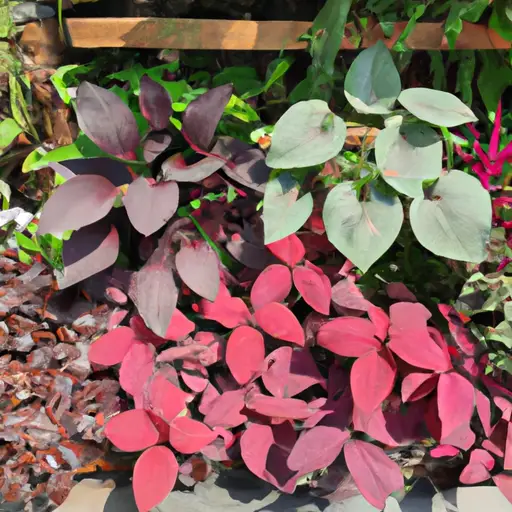The Art of Mixing Colors and Textures in Container Planting
Container gardening has become increasingly popular in recent years, as more people are turning to small-scale gardening on patios, balconies, and rooftops. One of the keys to successful container gardening is mastering the art of mixing colors and textures. By carefully selecting plants with complementing colors and textures, you can create beautiful and visually appealing container gardens that are sure to impress.
Color is perhaps the most important element when it comes to creating a stunning container garden. When selecting plants for your containers, consider the color wheel. Colors that are opposite each other on the wheel, known as complementary colors, create a vibrant contrast that catches the eye. For example, pairing purple flowers with yellow foliage will create an eye-catching combination.
On the other hand, choosing plants with analogous colors – colors that are adjacent to each other on the color wheel – creates a harmonious effect. For example, combining orange flowers with yellow or red ones creates a warm and inviting display. Consider using a variety of shades within your chosen color palette for added interest.
Texture is another crucial aspect to consider when mixing plants in containers. Texture refers to how a plant’s foliage or flowers look and feel – it can be smooth or rough, fine or coarse. Combining plants with varying textures adds visual interest and complexity to your container garden.

Consider using “thrillers,” “fillers,” and “spillers” in your containers to create depth and balance. Thrillers are tall plants that act as focal points in your arrangements; they add height and drama. Fillers are medium-sized plants that fill in gaps and add volume to the container. Lastly, spillers are trailing or cascading plants that spill over the edges of your containers, softening their appearance.
When choosing thrillers for your containers, opt for tall plants like ornamental grasses or spiky flowers such as upright salvias. These provide a vertical element that draws the eye upward. Fillers can include plants with interesting foliage, like coleus or heuchera varieties, or plants with abundant blooms such as geraniums or petunias.
Spillers are an essential component in container planting, as they soften the edges of the container and create a cascading effect. Suitable spillers include trailing vines like sweet potato vine or bacopa, as well as cascading flowers like calibrachoa or lobelia. These plants add a touch of elegance to your arrangement while ensuring that no space is left bare.
When mixing colors and textures, it’s important to consider the overall look you want to achieve. A harmonious container garden might feature plants with similar textures and complementary colors. For example, pairing fine-textured foliage with delicate flowers creates a soft and romantic feel.
On the other hand, contrasting textures can create a bold and striking display. Pairing coarse-textured foliage with spiky flowers creates an exciting visual contrast that demands attention. Pay attention to how different textures interact with each other – experimenting is key!

Another factor to consider when mixing colors and textures is the growing conditions of your chosen plants. Make sure the plants you choose have similar light and water requirements so they can thrive together in your containers. Nothing ruins a beautiful arrangement faster than having one plant struggling while others flourish.
As seasons change, so should your container plantings. Consider using different combinations of colors and textures throughout the year to keep your displays fresh and exciting. Experiment with seasonal annuals during spring and summer, transitioning to vibrant fall foliage in autumn. Use evergreen plants for winter interest, adding pops of color through berries or cold-tolerant flowers.
In conclusion, mastering the art of mixing colors and textures in container planting allows you to create visually stunning arrangements that bring joy and beauty to any space. By understanding color theory, selecting thrillers, fillers, and spillers strategically, and considering the overall look and growing conditions, you can unleash your creativity and create container gardens that are truly works of art. So go ahead, mix those colors and textures, and let your container garden be a vibrant expression of your personal style.













